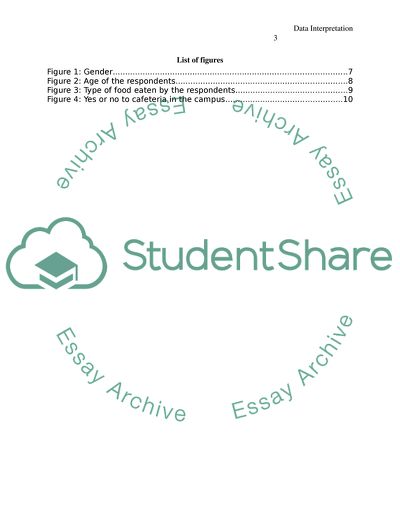Cite this document
(From the Survey to Hypothesis in Establishing Cafeteria on Campus Research Paper Example | Topics and Well Written Essays - 2250 words, n.d.)
From the Survey to Hypothesis in Establishing Cafeteria on Campus Research Paper Example | Topics and Well Written Essays - 2250 words. https://studentshare.org/statistics/1854105-from-the-survey-to-hypothesise-is-it-a-good-idea-to-establish-a-cafeteria-in-a-campus
From the Survey to Hypothesis in Establishing Cafeteria on Campus Research Paper Example | Topics and Well Written Essays - 2250 words. https://studentshare.org/statistics/1854105-from-the-survey-to-hypothesise-is-it-a-good-idea-to-establish-a-cafeteria-in-a-campus
(From the Survey to Hypothesis in Establishing Cafeteria on Campus Research Paper Example | Topics and Well Written Essays - 2250 Words)
From the Survey to Hypothesis in Establishing Cafeteria on Campus Research Paper Example | Topics and Well Written Essays - 2250 Words. https://studentshare.org/statistics/1854105-from-the-survey-to-hypothesise-is-it-a-good-idea-to-establish-a-cafeteria-in-a-campus.
From the Survey to Hypothesis in Establishing Cafeteria on Campus Research Paper Example | Topics and Well Written Essays - 2250 Words. https://studentshare.org/statistics/1854105-from-the-survey-to-hypothesise-is-it-a-good-idea-to-establish-a-cafeteria-in-a-campus.
“From the Survey to Hypothesis in Establishing Cafeteria on Campus Research Paper Example | Topics and Well Written Essays - 2250 Words”. https://studentshare.org/statistics/1854105-from-the-survey-to-hypothesise-is-it-a-good-idea-to-establish-a-cafeteria-in-a-campus.


